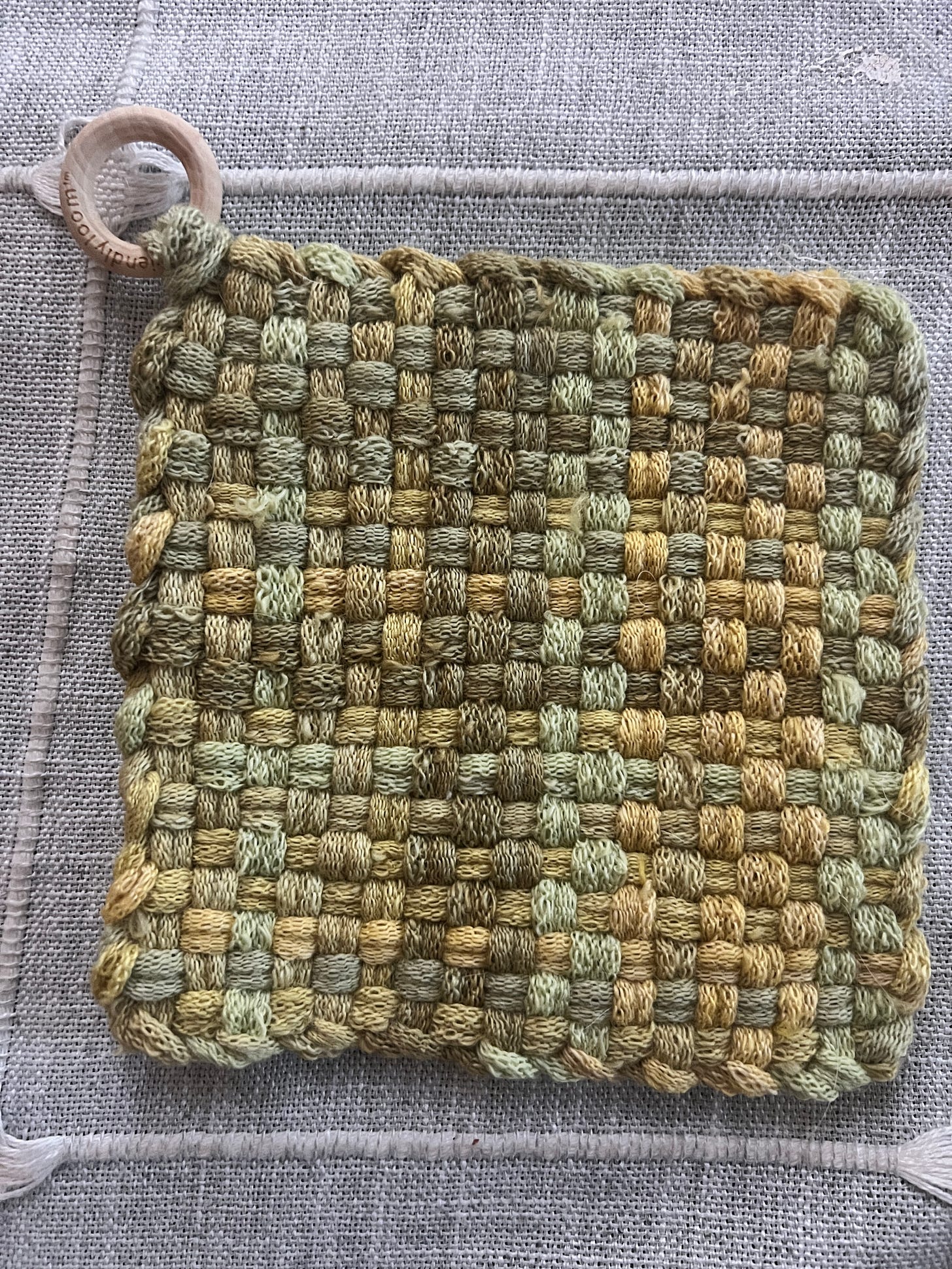I’ve fallen down the rabbit hole of making handwoven potholders over the past few months. After Hurricane Helene, I spent hours making them by candlelight as we waited for electricity, cell and internet service, and water to be restored. Many people have asked me about supplies for making potholders, so this Tuesday Tools is dedicated to that. Whether for yourself or a child you know, it’s a fun creative outlet and you can immediately put your artwork to use in the kitchen.
First, it’s important to know that most potholders are made on either a 7”x7” loom or a 10”x10” loom. The first is called a “traditional” loom and the second is called a “pro” loom and they require different loops, so keep that in mind. My first potholders were so unwieldy and loose and difficult to make until I realized I was using pro loops on a traditional loom. Oopsie, so keep that distinction in mind.
The pro loom potholders are big and better suited to be trivets, I think. They would make handling a casserole dish unsafe for me, I reckon, because of the extra material. I make them as trivets, and on the smaller loom, I make potholders.
To get started, you’ll need a loom. The most prevalent looms are these, and that is what I started on. They come in both sizes and are great to start out.
Now I use looms made by Cottage Looms Designs in both the traditional and pro sizes, and I heartily recommend them if you decide you like making potholders and will keep at it. Not everyone will, so start with the simple loom first. (At that Etsy store listing, you’ll simply see a list of what they offer; since everything is made to order, you won’t find photos of product listings.) You’ll see in the photo above this essay that the pins for the loom are higher than the starter looms, making it less likely you’ll pop loops off while weaving.
Speaking of which, you’ll need loops.
Potholders are built using fabric loops that you “load” onto the loom and then weave with. There are loads of YouTube videos showing how this is done.
For the brightly colored cotton loops that most people use and start with, you can get those at Friendly Looms or Harrisville. Again, note whether you are purchasing traditional or pro loops to avoid the surprise I had in the beginning!
I prefer the muted colors (and feel) of hand-dyed wool loops and there are a few good sources for wool loops, most of which are plant-dyed: Potholder artist Kate Kilmurray sells wool loops (see “curated loops”). And Hillcreek Fiber Studio on Etsy is another source for plant-dyed loops.
I also like the wooden rings to finish off the potholders and you can get those here. Here’s a video about how to put those on.
Books and Patterns
Among the books I use are these two:
There is a motherlode of free patterns on the Interweb Machine™ including this vast collection.
I hope this will get you started, and that you will find this as fun and peaceful as I have. Kids in your life might love it, too. Little woven works of art that are utilitarian—what’s not to love? Plus, you can hang them up with their little wooden ring and show them off like art between casseroles.
Who knows what’s next for me? Perhaps I’ll start dyeing my own loops. Won’t that be a bloody mess. LOL.








